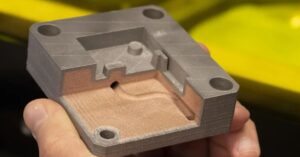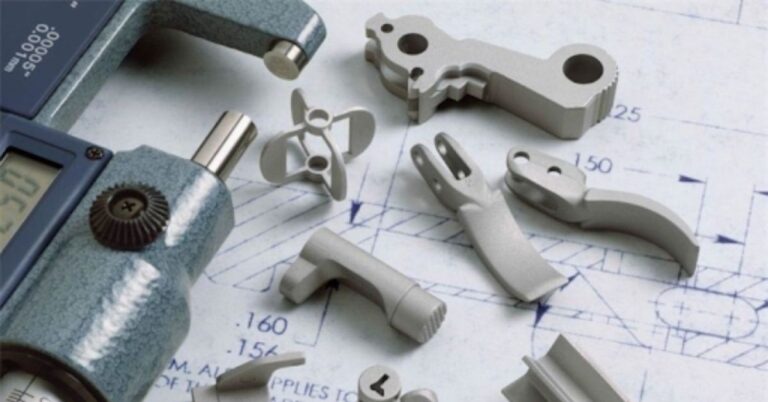Achieving precision in the aerospace industry is a matter of life and death. Not even the tiniest part can contain a dimension that is less than precise, or else something is guaranteed to go wrong. For that reason, the best method for making many parts in the industry is aerospace injection molding. Why? Because what this manufacturing method offers—precision, repeatability, and adaptability to a range of materials—makes better suited for making parts that won’t fail under the stresses of flight
This article explains why injection molding is the go-to for aerospace manufacturing, how it guarantees that precision and reliability are built right into the parts it produces, and the main reasons why it’s superior to more conventional methods of manufacturing.
The Importance of Precision in Aerospace Manufacturing
Critical Need for Accuracy
Aerospace components must meet extremely tight tolerances, often within ±0.005 mm. Even small deviations can cause:
- Performance failures that lead to malfunctions in aircraft systems.
- Safety risks that stem from improperly fitted parts that compromise an aircraft’s structural integrity.
Because parts for the aerospace industry must withstand extreme conditions—fast moving air, intense vibrations, and significant temperature changes—there’s simply no room for error.
Complex Designs and Engineering Challenges
Components in the aerospace industry have extremely complex designs, which include the following elements:
- Reinforced structures that feature thin walls, thereby reducing weight while retaining strength.
- Internal cavities and complex geometries that enhance aerodynamic performance.
- Multi-functional components that combine multiple tasks within a single part.
Traditional machining and casting as well as other earth-bound manufacturing technologies have always struggled to create such highly complex parts consistently. And yet, plastic injection molding has been used for over half a century to create millions of highly detailed parts with utter consistency and superior quality.
How Injection Molding Ensures Precision
High Accuracy and Repeatability
Manufacturers can produce vast quantities of uniform parts in very short periods, thanks to plastic injection molding service. Yet, the level of precision it offers in achieving component uniformity is impressive. Consider the following factors:
- Computer-controlled systems that build a mold and then inject material into and through it with just the right amount of force, at just the right speed, and for just the right length of time.
- High-precision CNC machining is used to achieve the tolerances of tight as ±0.002 mm in advanced mold fabrication.
- Real-time automated quality control finds and fixes defects.
Complex Geometries and Part Integration
The manufacturing of complicated, multi-functional parts that other methods find difficult or impossible to produce is the domain of injection molding. This encompasses: Undercuts, hollow structures, and intricate patterns, which enhance part functionality. Integrated fasteners, hinges, and connectors, reducing the need for assembly. Lightweight, reinforced parts, which improve fuel efficiency in aerospace applications.
Precision Tooling and Material Flow Control
The quality of the mold largely determines how accurately parts formed by injection molding will be. Injection molding for aerospace applications depends on:
- High-grade steel molds that are durable and built to last.
- Mold flow analysis to ensure that material is distributed evenly, so defects like warping or sink marks don’t occur.
- Advanced cooling systems that allow for fine control over how and when the molten material solidifies, with an eye toward achieving enhanced dimensional stability.
These are modern methods of production that will yield consistent and reliable aerospace-grade components when followed to the letter.
Benefits of Injection Molding for Aerospace Parts
Cost-Effectiveness for High-Volume Production
- The per-unit cost drops significantly: after the initial outlay for the mold itself, making each successive part is almost trivial.
- The material cost is low: with no CNC-style waste, the process is essentially just-in-time for the required geometrical shapes.
- And the speed is just ridiculous: modern automated injection-molding systems (all-electric) can pump out parts, 24/7, making thousands of components in a day (each one molded with an absurd level of precision).
For the aerospace sector, injection molding’s partnership with 3D printing (for mold-making) provides them with the precision and the required geometry—all at the scale and the low price points necessary to make it a viable long-term manufacturing.

Material Versatility
Aerospace applications require materials that have very particular properties: they must be strong, heat-resistant, and lightweight. An injection molding facility supports a wide range of these specialized materials, including:
- High-performance thermoplastics like PEEK and Ultem, which are lightweight yet heat-resistant.
- Glass-fiber-reinforced plastics that enhance strength and durability.
- Conductive polymers, which are used in avionics and electronic shielding applications.
Consistency and Reliability
Ensuring parts meet exact specifications is a necessity for aerospace manufacturers. Injection molding guarantees:
- Unmatched repeatability—every batch identical
- Durability under extreme conditions—not just reliable, but built to withstand stress
- Compliance with all the right standards; and for us today, that’s FAA and ISO 9001 relevant to the aerospace industry
- Precision—an unqualified need for high part-to-part consistency makes this an imperative.
Conclusion
Precision, durability, and cost efficiency are essential for the manufacturing of critical components in today’s aerospace industry.
Injection molding services profit from its ability to produce complicated designs, maintain close tolerances, and exhibit material flexibility in ensuring the reliability aerospace demands. Injection molding delivers high-quality levels in volume starting from structural parts, electronic enclosures, through to high-performance polymers.
By partnering with an experienced injection molding supplier, aerospace businesses can reduce costs, become more efficient, and meet the industry’s highest standards.

